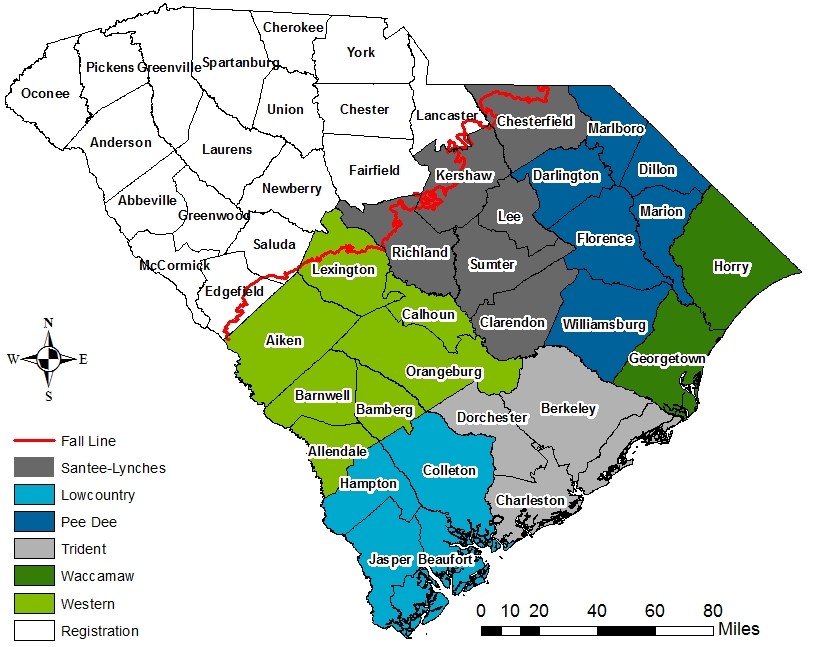Six areas within the state have been designated as Capacity Use Areas (see Figure 1). These include the Low Country (Beaufort, Colleton, Hampton, and Jasper counties), the Pee Dee (Darlington, Dillon, Florence, Marion, Marlboro, and Williamsburg counties), the Trident (Berkeley, Charleston, and Dorchester counties), the Waccamaw (Georgetown and Horry counties), the Western (Aiken, Allendale, Bamberg, Barnwell, Calhoun, Lexington, and Orangeburg counties), and the Santee-Lynches (portions of Chesterfield, Kershaw, and Richland counties, along with Clarendon, Lee, and Sumter counties). Within these six areas, groundwater withdrawal permits are required to withdraw and use groundwater if the use is equal to or greater than 3 million gallons in any month. Three million gallons a month is equal to 100,000 gallons a day or approximately 69 gallons a minute. As an example, if you were to apply 1 inch of water on 100 acres in a week, that would be equivalent to approximately 2.7 million gallons of water a week. This would be equal to 10,861,600 gallons a month. All of the state's Capacity Use Areas are located in the Coastal Plain of South Carolina, the geographic area of the state that is east of the Fall Line.
Typically, the entities or individuals who need to get a groundwater withdrawal permit are public water supply utilities, industries, golf courses, and farming operations.
